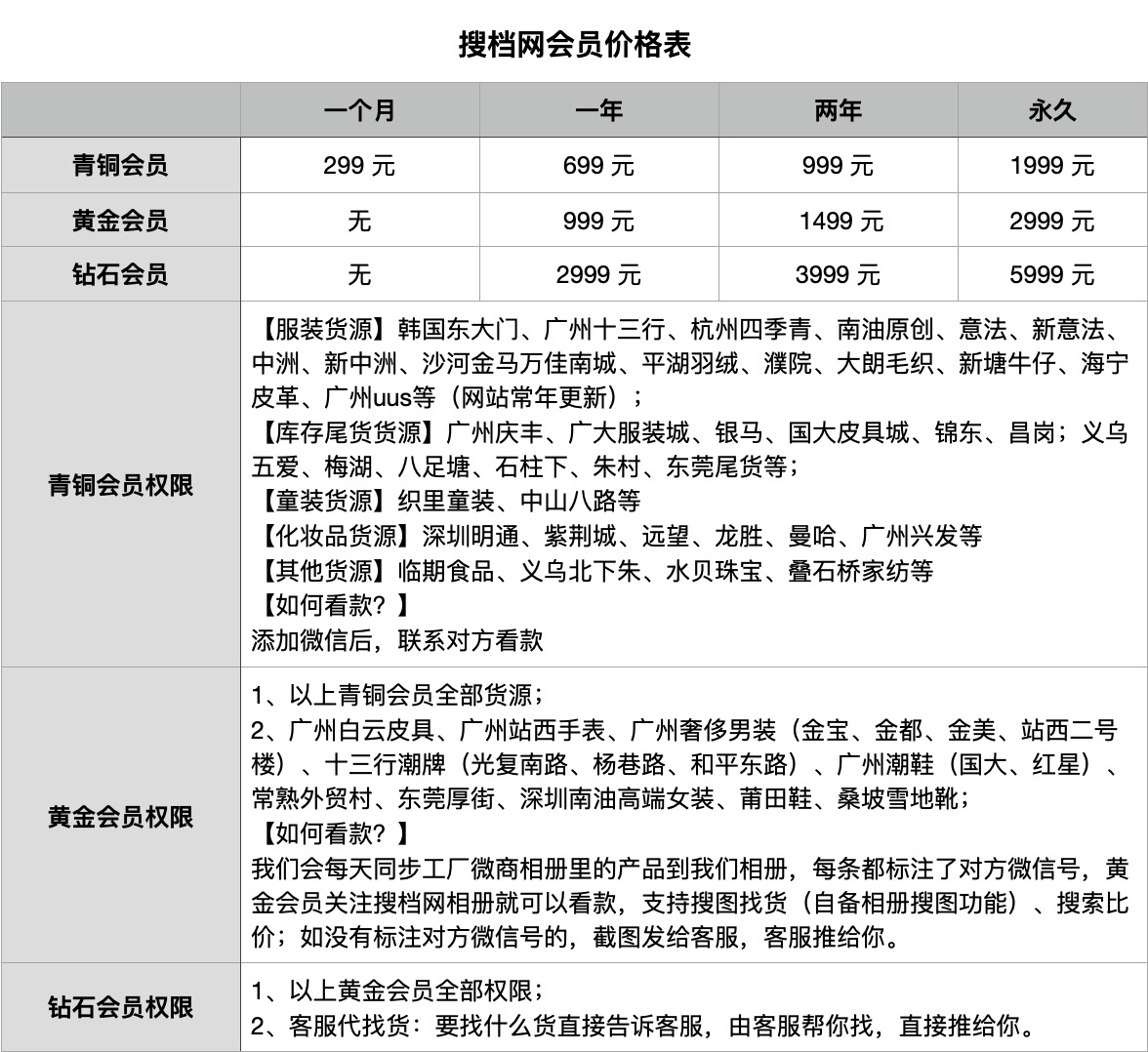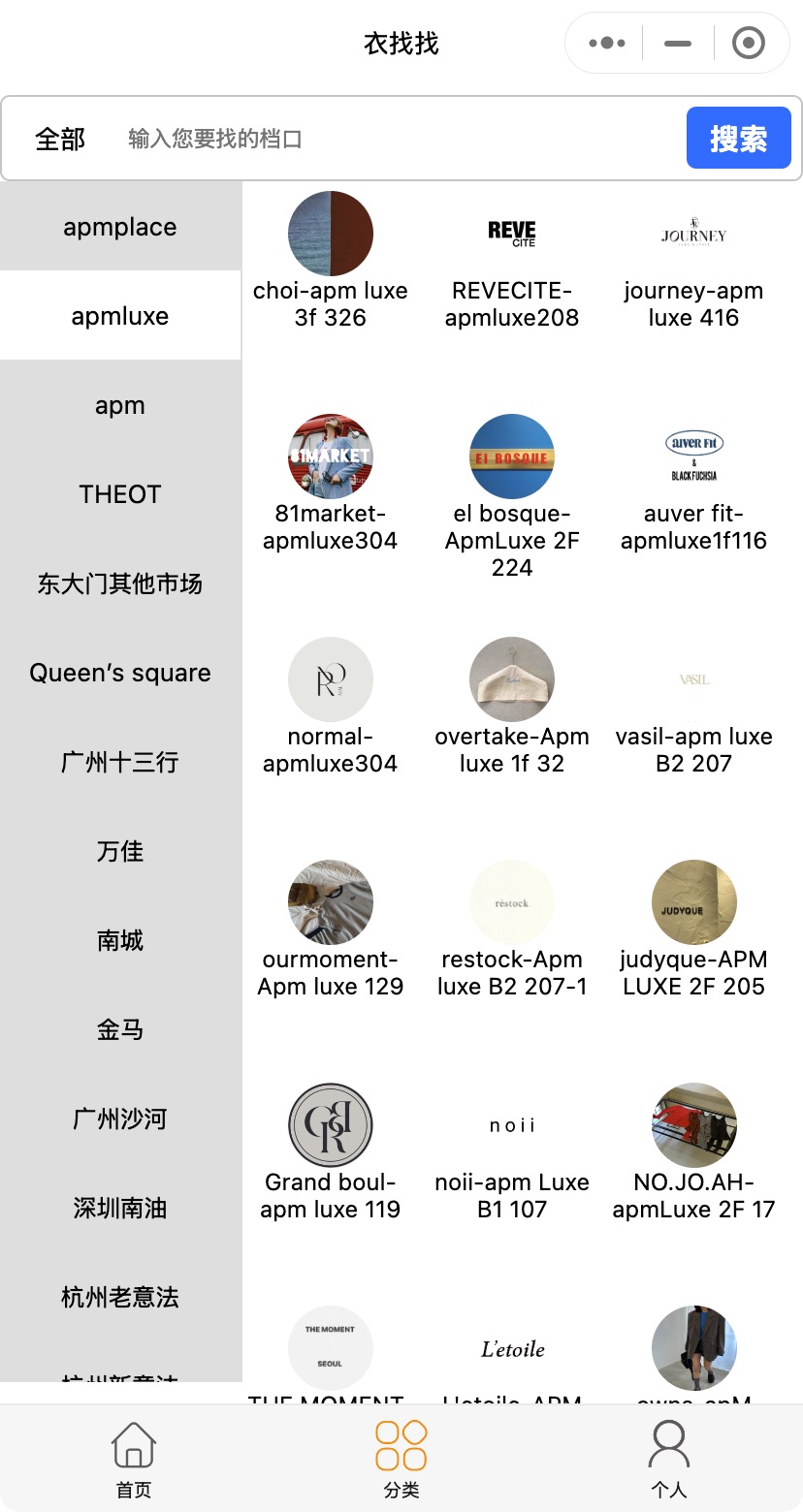For China′s wholesale market information, visit Soudangkou.com at cdn.soudangkou.com . Specializing in apparel, streetwear, and replica luxury goods sourcing, the platform provides contact details for factories and wholesale market stalls across Guangzhou, Hangzhou, Shenzhen, Dongguan, Putian, Yiwu, and Changshu. Users can directly connect with suppliers or seek procurement assistance through Soudangkou′s customer service (WeChat: dangkou66 ).Table of contents
hide
1.
Introduction
2.
Common Methods of IP Protection When Developing Your New Product in China
3.
How to Register Your IP in China
4.
Who Should Be on Guard Against IP Thieves in China
5.
What Should You Do if Your IP Has Been Violated?
Introduction
Intellectual property (IP) is the cornerstone of contemporary businesses in today’s dynamic commercial environment, where fresh concepts and innovation rule supreme. The intangible assets that give life to your distinctive ideas, brands, and breakthroughs include patents, trademarks, copyrights, and carefully held trade secrets.
A strategic need to maintain your competitive edge, protecting these assets goes beyond simple legal compliance. This manual explores the crucial procedures needed to guarantee the safety of your brand and ideas when working on new products in China.
As the stakes are high in a globalized and cutthroat industry, you must empower yourself with the knowledge of how to protect your intellectual property. Look at some successful IP protection strategies for this dynamic corporate environment.
Common Methods of IP Protection When Developing Your New Product in China
Protection of your intellectual property (IP) is paramount while developing new goods in China. Preserving your creative thoughts, brand identity, and original spark is crucial in today’s dynamic global business environment.
We’ll go into the practical strategies of how to protect your intellectual property (IP) to ensure that your firm not only survives but also thrives while retaining your unique assets as we lead you through this complex path.
– Register Your IP in China
Intellectual property (IP) is a valuable asset that can be saved through various legal mechanisms. The registration procedure for IP involves identifying unique characteristics, consulting a legal expert, and completing the necessary paperwork.
Here are some critical points in registering your intellectual property (IP) in China:
- IP Protection:
Intellectual Property is an invaluable asset and should be safeguarded legally.
- Registration Process:
IP registration requires identifying distinctive features, professional consultation, and documentation completion.
- Monitoring and Enforcement:
Regularly monitor and enforce IP rights; work with a local counsel to comply with developing Chinese IP regulations.
Mike Bellamy’s “How to register, protect, monitor & enforce Intellectual Property (IP) rights in China” provides all the necessary and crucial details on registering your IP in China. The video link is below:
– Contract with Manufacturers
Your IP protection strategy’s foundational step is forging connections with your Chinese suppliers. These relationships must be based on mutual trust and protected by written agreements. The core terms of the contracts with the manufacturers are given below:
1. Trust-Based Supplier Relationships
Develop a strong confidence in your Chinese suppliers and safeguard that confidence through transparent, flexible contracts. This entails developing trust between parties and ensuring that your arrangements are clear-cut and flexible enough to accept modifications.
2. Contract Transparency for IP Protection:
The ownership of intellectual property permitted uses, and sanctions for IP infractions must all be clearly stated in contracts. This level of specificity and clarity is necessary to ensure that all parties know their rights and obligations regarding intellectual property.
3. Legal Experts for Enduring Contracts
Consult legal experts knowledgeable in IP law and global trade for lasting and effective contracts. By doing this, you can be confident that your arrangements will always be legally valid, up to date with new laws, and consistent with your company objectives. Some platforms and websites where you can find core templates of contracts for various purposes are as follows:
- LegalZoom
- Rocket Lawyer
- UpCounsel
- LawDepot
- US Small Business Administration (SBA)
4. Contract’s Clarity
Specific Contracts: Your contracts must be exact, leaving no possibility for confusion regarding intellectual property rights.
Precise Usage Terms: Clearly state how the manufacturer may use your intellectual property in this section.
Penalties for Unlawful Use: Outline the repercussions or fines for any incorrect or unlawful usage of your IP.
5. Review Contracts
Contract Maintenance: Examine and revise contracts regularly to align with evolving legal and commercial circumstances.
Legal Conformity: Make sure that contracts follow all applicable laws and rules.
Flexibility: Contracts must be adaptable enough to consider changes in your company’s operations and the regulatory environment.
5. Tips
- To ensure your contracts are durable, consult a legal professional knowledgeable in IP law and international commerce.
- Encourage open and truthful conversations with your Chinese manufacturing partners to boost trust in your connections.
– Internal Design Secrecy Process
Building an internal design secrecy process inside your company is like erecting a solid wall around your intellectual property. It all comes down to restricting access to your private IP data and ensuring that only those with a genuine need can access it. To make this aspect of your IP protection approach stronger, make sure to follow the recommended measures:
-
Educate
Ensure your staff members know the need for IP protection and how to protect the brand or your intellectual property (IP). Give them specific instructions on handling confidential information so they are aware of the risks.
-
Secure Protocols
Create reliable data handling and storage methods to lessen the possibility of leaks or unwanted access. Consider it your essential IP’s very own virtual safe.
-
Consistent Audits
Your IP security requires routine audits, just like you would at the doctor’s office. These audits aid in identifying and resolving possible weaknesses in your company.
-
Tips
1. Promote a culture of watchfulness and accountability for IP protection across the business.
2. Encourage your staff to take responsibility for IP security by making them all champions.
Combining these tactics effectively creates a solid wall to protect your intellectual property while developing new items in China. It’s a proactive, meticulous, and knowledge-driven strategy that ensures your intellectual property remains valuable rather than exposed.
How to Register Your IP in China
Protecting your intellectual property (IP) in China is crucial to maintaining your distinctive inventions and brand identification. Let me explain clearly how to conduct this vital procedure:
Step 1: Identify Your Intellectual Property
- Choose the intellectual property you wish to safeguard (such as trademarks, patents, or copyrights).
- Make sure others have not registered your IP by conducting a comprehensive search.
Trademarks might protect the brand identity if it is a crucial asset. Additionally, copyrights can protect any creative elements in your goods, such as any artwork or designs.
Step 2: Consult with a Legal Expert
- Contact a regional attorney or IP expert with an understanding of China’s IP regulations.
- They provide an in-depth understanding of the regional legal system, ensuring your intellectual property rights are secured successfully.
- They’ll assist you through the confusing web of paperwork and legal procedures, ensuring your IP registration is safe and compliant.
Step 3: Apply for Registration
The registration procedure for trademarks, patents, and copyrights is more or less the same, with very slight differences. The step-by-step guide for registering your IP is as follows:
1. Patents
- Go to the China National Intellectual Property Administration (CNIPA)Website
- Create thorough documentation for your ideas, such as technical details, drawings, and additional necessary resources.
- Pay the necessary fees, which may change based on the nature and application of your patent.
2. Trademarks
- Visit the China National Intellectual Property Administration (CNIPA)website to apply for registration.
- Describe your trademark, logo, or mark and the specifics of how it will be used.
- Pay the relevant application costs, which change depending on how many classes your trademark encompasses.
3. Copyrights
- You can apply for registration of your copyrights through theNational Copyright Administration of China (NCAC)
- Pay the registration fee, which is comparatively nominal and affordable
- Submit copies of your unique original creations, such as artwork, literature, or software.
Step 4: Monitor and Enforce
- Keep a regular eye out for any potential infractions or illegal IP usage. Look for any violation indications, such as plagiarism or illicit duplication.
- The cornerstones of keeping your IP as an invaluable asset instead of a weak target are constant monitoring and prompt enforcement.
- It gives your original concepts and artistic creations a legal safety net, guaranteeing you keep your competitive edge.
Who Should Be on Guard Against IP Thieves in China
Protecting your original ideas and brand identification is essential in the complex intellectual property (IP) realm, especially if you’re conducting business in China. Even though many people in China abide by the law whenever it concerns intellectual property, it is crucial to protect your IP proactively. This entails being vigilant for possible dangers from several angles:
1. Manufacturers (Proportionately Low Risk)
The majority of Chinese producers are knowledgeable about intellectual property laws. Usually, they keep it safe and refuse to produce your items or replicate your work without your consent. They could, however, find inventive ways to go around your patents, such as modifying your patented goods and then formally filing for their patents.
Adopt the following coping strategies if you risk manufacturers seeking to alter your patented products or circumvent your patents:
-
Maintain and Protect Your Patents:
Keep a close eye on your intellectual property to spot any possible violations or attempts to violate your patents. This attention to detail enables you to see any unlawful changes and take immediate action to stop them.
-
Strengthen Legal Contracts:
Include sections in your agreements with manufacturers that specifically state your IP rights, list the consequences of any infringement, and implement measures for avoiding alterations or duplication without permission.
2. Patent Trolls (Moderate Risk)
Here’s when things start to get interesting. Some are known as patent trolls who earn a career by engaging in IP mischief. They register trademarks or patents for your items, particularly if you still need to do so in China. Then, to make a fast buck, they take legal action, such as filing lawsuits, after you decide to enter the Chinese market.
Here are some coping strategies for Patent Trolls:
-
Proactive IP Registration:
Register your intellectual property in China as soon as possible. This can assist in establishing unambiguous ownership and lessen the possibility of patent trolls acquiring your intellectual property.
-
Documentation and Evidence:
Keep complete documentation of your IP creation and usage that can be used as proof in court and legal disputes.
3. Your Competitors (High Risk)
When your achievement is evident to everyone, rivals could try to join the bandwagon by imitating what you’ve done. They pose a substantial threat to your IP. Therefore, you must be entirely conscious of this risk and take prompt action to halt them right in their tracks. It’s similar to looking after your intellectual property gem.
Let’s explore the coping strategy for competitors:
– Constant Innovation
Maintaining an environment that values constant innovation makes it difficult for rivals to catch up. You stay ahead of the competition because of your continuous innovation and development.
– Brand Strength:
Improve the reputation and identity of your brand. Establishing yourself as a thought leader will make it considerably harder for rivals to steal your ideas.
What Should You Do if Your IP Has Been Violated?
It might be upsetting when you discover your intellectual property (IP) might have been compromised, but it’s crucial to act quickly and efficiently. If you find yourself in this challenging situation, follow these instructions:
Collect Evidence
Gathering reliable proof is critical when learning about an intellectual property violation. The pattern for collecting evidence when your IP is violated is usually as follows:
- Detailed Incidence Records:
Start by meticulously recording each instance of infringement on your intellectual property. Include the occasion’s date, location, and participants. Maintaining a complete record is essential for creating a compelling argument.
- Digital and Visual evidence:
Take clear pictures and screenshots to document the violation. Save any digital evidence of the unauthorized use of your IP, such as screenshots of websites and postings on social media. Your statements are more believable when you provide concrete supporting evidence.
- Experts Opinions and Witnesses:
Gather testimony from anyone who can attest to the IP breach. You should also seek expert comments and assessments to lend credibility to your argument and give professional backing.
- Supporting Documents:
To support your allegations, compile pertinent paper trails, such as letters, contracts, and bank documents. Evidence with a transparent chain of custody is reliable and supports your case for protecting your IP rights.
Engage Legal Professionals
Connecting with attorneys focusing on IP issues is crucial when dealing with an intellectual property violation. These legal professionals have the training and expertise to negotiate IP law’s intricate web successfully. They act as your guide, assessing the problem, offering insightful counsel, and helping you determine the best action.
Their knowledge lets you make wise choices and take the best precautions to protect your IP. Consider them as dependable advisers who will assist you through the legal complexities and ensure your rights are upheld as you deal with the infringement.
Send a Prohibition Letter
Your legal advisor could suggest you send a stop and prohibit letter to the offender in the fight against IP infringement. This legal letter is a robust and formal request that any unlawful usage of your intellectual property end right now.
It’s frequently the first step in reaching a compromise. The letter demonstrates your will to uphold your rights and may occasionally result in settlement talks.
Following are some resources where you can find templates of prohibition letters:
Websites: LegalZoom, LawDepot, and Rocket Lawyer.
Softwares: Cilo or MyCase
Legal Sources & Blogs: Nolo or FindLaw
Consider Alternatives
Consider using an alternate dispute resolution process, like mediation or arbitration, rather than just jumping into a legal fight. Compared to a full-fledged court battle, these options are frequently faster and less expensive.
In mediation, an impartial third person helps you and the party violating the law negotiate a resolution acceptable to both parties. An arbitrator renders a binding ruling based on the facts provided in an arbitration proceeding. These options can offer practical ways to fix the problem and conserve time and resources.
Engage in legal action
You could be forced to file formal legal action if all efforts at a peaceful arrangement are unsuccessful and the violation persists. During this stage, your lawyer will assist you as you navigate the complex litigation procedure.
This can mean bringing a legal action and arguing your case in court against the party that violated your intellectual property. It’s the stage where the dispute moves from discussion to a courtroom trial, with your lawyer serving as your primary representative in the fight for justice.
Swift and intelligent action is crucial when it comes to intellectual property violations. It’s critical to remember that protecting your IP entails more than simply fighting legal fights; it also entails defending the value of your inventions and brand identity.
You may effectively handle IP infractions and guarantee that the confidentiality of your intellectual property stays intact by following these guidelines and seeking the assistance of professionals. This proactive approach protects your work and maintains your market advantage.





![Must-See for New Store Owners! In-Depth Analysis of Nanyou Building 108’s [34 Bestselling Wholesalers]! Bestsellers, Designer Styles, and New Chinese Chic All in One Place!](https://cdn.soudangkou.com/2025/10/20251031022627852.png)






